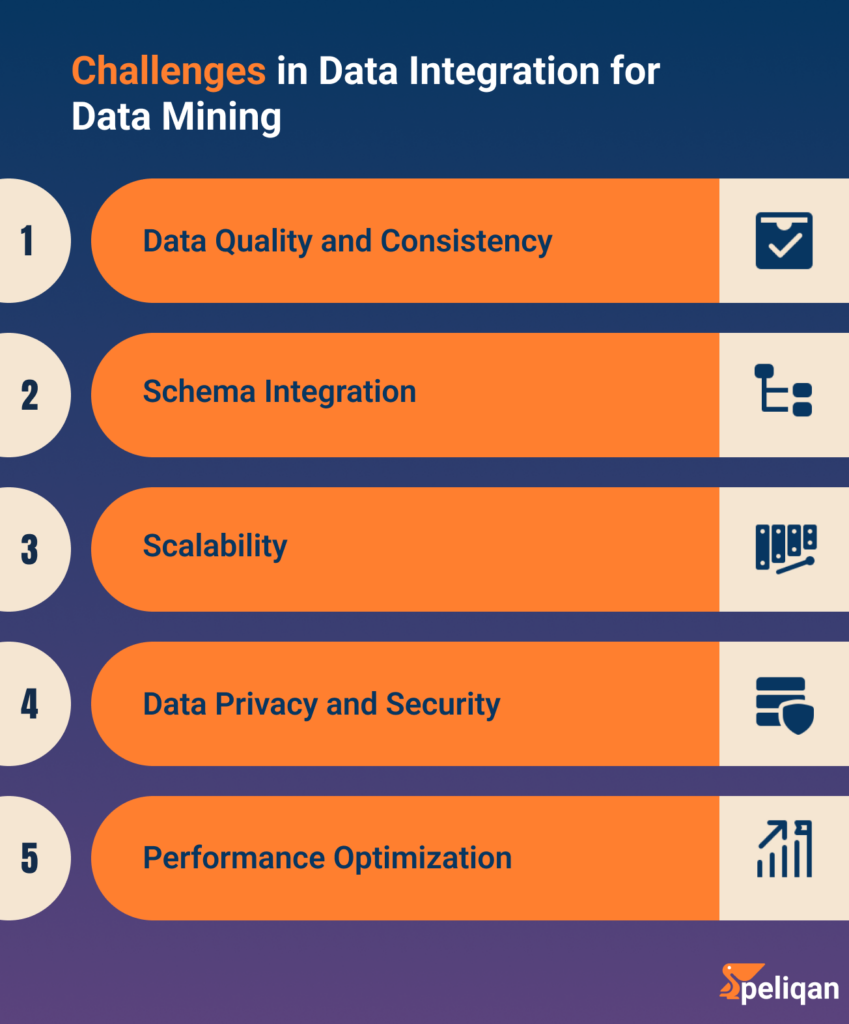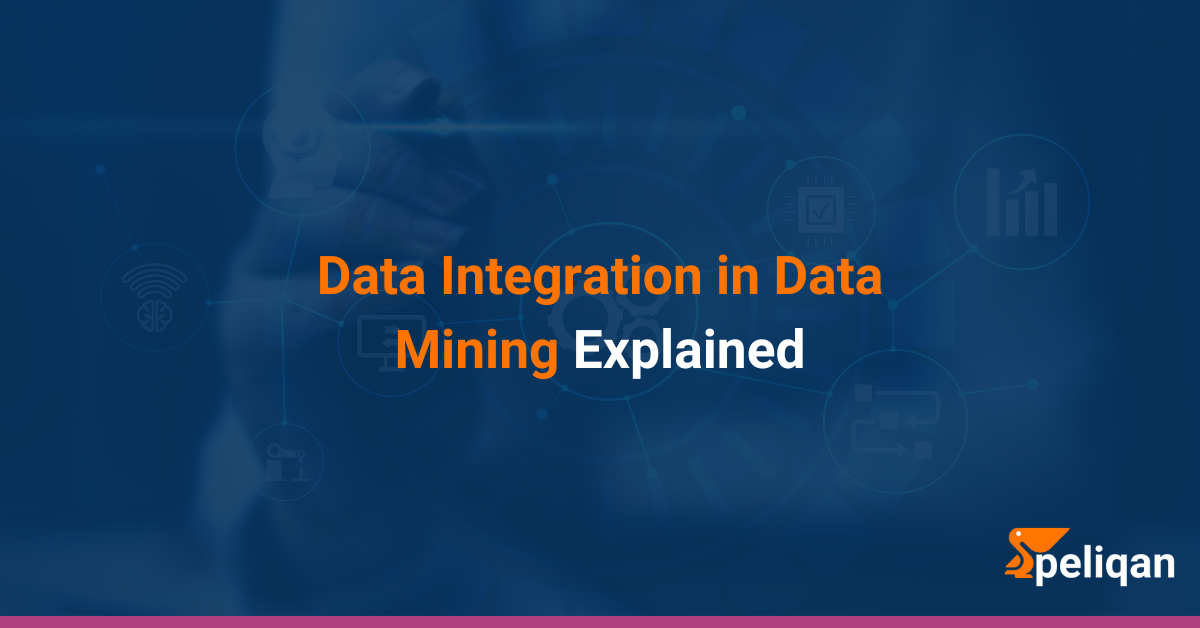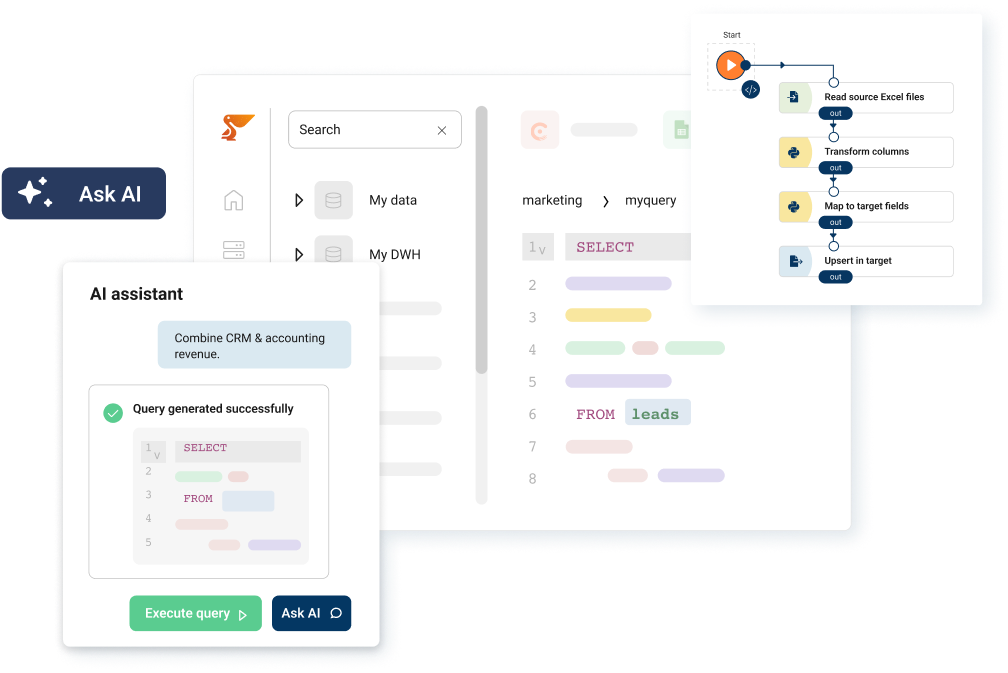In today’s data-driven world, organizations are inundated with vast amounts of information from diverse sources. However, the true value of this data lies not just in its volume, but in our ability to cohesively analyze and extract meaningful insights from it. This is where data integration in data mining plays a crucial role, acting as the bridge between scattered data points and actionable knowledge.
Understanding Data Integration in Data Mining
Data integration in data mining is the process of combining data from multiple sources into a unified and coherent dataset. This step is crucial in data mining as it allows analysts to work with a comprehensive view of the information, rather than fragmented pieces from different systems or databases.
The integration process typically involves several key steps: identifying relevant data sources, extracting data from these sources, transforming the data into a compatible format, and loading it into a target system (often referred to as ETL – Extract, Transform, Load).
This integrated dataset then serves as the foundation for various data mining techniques such as clustering, classification, and association rule mining. Effective data integration can lead to improved data quality, reduced redundancy, and enhanced analytical capabilities, ultimately driving more accurate and valuable insights from the data mining process.
Key aspects of data integration in data mining include:
- Merging data from diverse sources (databases, flat files, APIs, etc.)
- Resolving inconsistencies in data formats and structures
- Eliminating redundancies and duplications
- Ensuring data quality and consistency for accurate mining results
Now that we’ve grasped the basics of data integration in data mining, let’s explore its crucial role in the overall mining process.
The Role of Data Integration in the Mining Process
Data integration serves as a critical preparatory step in the data mining workflow. By bringing together diverse datasets, it creates a rich, multidimensional view that enhances the effectiveness of data mining algorithms. This unified perspective allows for the discovery of patterns and relationships that might remain hidden when analyzing individual data sources in isolation.
Furthermore, data integration improves the quality and consistency of the data used in mining operations. Through the process of merging and standardizing data from various sources, inconsistencies are resolved, errors are corrected, and missing values are addressed. This results in a more reliable dataset, which in turn leads to more accurate mining results. High-quality, integrated data reduces the risk of false insights and increases the confidence in the patterns discovered.
Lastly, integrated data enables more sophisticated and comprehensive analysis techniques. It allows data mining algorithms to explore relationships across different domains and data types, leading to deeper insights.
For example, a business can combine customer transaction data with social media interactions and demographic information to create more precise customer segmentation models or develop more accurate predictive analytics.
This holistic approach to data mining, made possible by effective data integration, empowers organizations to make more informed decisions and develop strategies based on a complete view of their data landscape.
To fully appreciate the complexity of data integration, it’s important to understand its key components and how they work together.
Architecture of Data Integration in Data Mining
The architecture of data integration for data mining typically involves several key components:
- Source Systems: Original data sources (databases, files, external APIs)
- Data Staging Area: Temporary storage for extracted data before transformation
- ETL Layer: Processes for extracting, transforming, and loading data
- Integrated Data Repository: Often a data warehouse or data lake
- Metadata Repository: Stores information about data lineage, schema, and transformations
- Data Mining Layer: Tools and algorithms for pattern discovery and predictive modeling
- Presentation Layer: Interfaces for visualizing mining results and insights
This layered architecture ensures a smooth flow from raw data to actionable insights, with data integration serving as the crucial foundation for effective data mining. With a clear understanding of the architecture, let’s examine the different approaches organizations can take to implement data integration in their data mining processes.
Approaches to Data Integration in Data Mining
There are two primary approaches to data integration in the context of data mining: tight coupling and loose coupling. Each approach has its own strengths and is suitable for different scenarios.
Tight Coupling Approach
The tight coupling approach involves creating a centralized repository, typically a data warehouse, to store integrated data. This method follows the Extract, Transform, Load (ETL) process:
- Extract: Data is pulled from various sources
- Transform: The extracted data is cleaned, formatted, and standardized
- Load: The transformed data is loaded into the centralized repository
Tight coupling offers several advantages:
- Ensures data consistency and integrity
- Provides a single, unified view of data
- Enables efficient querying and analysis
However, it can be less flexible when dealing with rapidly changing data sources or when real-time integration is required.
Loose Coupling Approach
The loose coupling approach, also known as data federation, integrates data at a lower level, often at the point of query. Key characteristics include:
- Data remains in its original sources
- An interface translates user queries to source-specific formats
- Results are combined and presented in real-time
Loose coupling offers benefits such as:
- Greater flexibility in handling diverse and changing data sources
- Reduced storage requirements
- Real-time data access
However, it may face challenges in maintaining consistent performance across multiple data sources. To help you better understand the differences between these approaches, here’s a comparison table:
| Aspect | Tight Coupling | Loose Coupling |
|---|---|---|
| Data Storage | Centralized repository | Distributed across original sources |
| Integration Time | During ETL process | At query time |
| Data Consistency | High | Variable |
| Query Performance | Generally faster | Can be slower for complex queries |
| Flexibility | Less flexible | Highly flexible |
| Real-time Capability | Limited | Strong |
| Storage Requirements | Higher | Lower |
| Implementation Complexity | Higher initial setup | Lower initial setup |
Understanding these approaches allows organizations to choose the most suitable method for their specific data integration needs in data mining projects. However, regardless of the chosen approach, data integration comes with its own set of challenges that must be addressed.
Challenges in Data Integration for Data Mining
While data integration is crucial for effective data mining, it comes with its own set of challenges that organizations must navigate:

1. Data Quality and Consistency
Ensuring data quality and consistency is a primary challenge in data integration. When combining data from multiple sources, organizations often encounter inconsistent data formats, conflicting information, and varying levels of data quality. This challenge involves not only dealing with formatting discrepancies but also resolving semantic differences where similar terms might have different meanings across systems.
Additionally, handling missing or incomplete data requires careful consideration to maintain the integrity of the integrated dataset. Organizations must implement robust data cleansing and standardization processes to ensure that the final integrated data is accurate, reliable, and suitable for mining purposes.
2. Schema Integration
Schema integration poses a significant challenge due to the diverse data models and structures used by different systems. Reconciling these differences to create a unified schema requires careful mapping of attributes between various data sources. This process is complicated by semantic heterogeneity, where similar terms may have different meanings or different terms may represent the same concept across systems.
Furthermore, as data sources evolve over time, maintaining schema integration becomes an ongoing task. Organizations need to develop flexible integration strategies that can adapt to changes in source schemas without disrupting existing data mining processes.
3. Scalability
As the volume, velocity, and variety of data continue to grow, scalability becomes a critical challenge in data integration. Integration processes must be able to handle increasingly large datasets, often in real-time or near-real-time scenarios. This requires not only powerful hardware but also efficient algorithms and architectures.
The challenge extends to adapting integration processes when new data sources are added, which can significantly increase the complexity and resource requirements of the system. Ensuring that integration performance scales linearly with data growth is essential for maintaining the effectiveness of subsequent data mining activities.
4. Data Privacy and Security
Integrating data from various sources raises significant concerns about data privacy and security. Organizations must ensure compliance with data protection regulations such as GDPR, NIS2, and industry-specific standards, which can be challenging when dealing with data from multiple jurisdictions. Implementing robust access controls for integrated data is crucial to prevent unauthorized access to sensitive information.
Moreover, organizations need to maintain data lineage and auditability throughout the integration process, ensuring that the origin and transformations of data can be traced. Balancing the need for comprehensive data integration with the imperative to protect sensitive information requires careful planning and implementation of security measures.
5. Performance Optimization
Optimizing performance is an ongoing challenge in data integration for data mining. As data volumes grow and integration processes become more complex, maintaining efficient query performance becomes increasingly difficult. Organizations must balance the need for data freshness with query response times, often implementing caching strategies for frequently accessed data.
Resource management is another critical aspect, ensuring that integration tasks don’t overwhelm system resources and impact other operations. Continuous monitoring and tuning of integration processes are necessary to maintain optimal performance as data landscapes evolve and mining requirements change.
Having identified the challenges, let’s now turn our attention to best practices that can help organizations overcome these obstacles and maximize the benefits of data integration in their data mining efforts.
Best Practices for Data Integration in Data Mining
To maximize the benefits of data integration in data mining, organizations should consider the following best practices:
Define Clear Objectives
- Align integration goals with overall business objectives
- Identify specific use cases for the integrated data
- Set measurable success criteria for the integration project
Implement Data Governance
- Establish clear data ownership roles
- Develop and enforce data quality standards
- Create policies for data access, usage, and security
- Implement data cataloging and metadata management
Choose the Right Integration Approach
- Assess the pros and cons of tight coupling vs. loose coupling for your specific needs
- Consider hybrid approaches that combine elements of both methods
- Evaluate the scalability and flexibility of potential integration solution
Invest in Data Profiling
- Conduct thorough analysis of data sources before integration
- Identify data quality issues, patterns, and relationships
- Use profiling results to inform integration strategy and data cleansing efforts
Automate Where Possible
- Implement automated data extraction and loading processes
- Use ETL tools or data integration platforms to streamline workflows
- Employ automated data validation and error handling mechanisms
Prioritize Data Quality
- Implement robust data cleansing and standardization processes
- Use data quality tools to detect and correct errors
- Establish ongoing data quality monitoring and improvement processes
Plan for Scalability
- Design integration architecture to handle future growth
- Use cloud-based solutions for flexibility and scalability
- Implement modular designs that allow for easy addition of new data sources
Monitor and Optimize
- Implement performance monitoring for integration processes
- Regularly review and optimize integration workflows
- Gather feedback from data consumers and iterate on the integration strategy
By following these best practices, organizations can create a solid foundation for data integration that enhances their data mining capabilities. As we look to the future, it’s important to consider how emerging technologies will shape the landscape of data integration in data mining.
The Future of Data Integration in Data Mining
As technology continues to evolve, the landscape of data integration in data mining is poised for significant advancements:
AI-Powered Integration
Artificial Intelligence and Machine Learning are increasingly being applied to automate and optimize data integration processes. These technologies can help in:
- Identifying data relationships across sources
- Automating schema mapping
- Detecting and correcting data quality issues
Real-Time Integration
With the growing importance of real-time analytics, data integration solutions are evolving to support streaming data and real-time processing, enabling more timely insights from data mining.
This shift towards real-time integration is driven by the need for instant decision-making in various industries, from finance to e-commerce. Advanced technologies like stream processing engines and in-memory databases are making it possible to integrate and analyze data on the fly, reducing latency and enabling organizations to respond to events as they happen.
Cloud-Based Integration
Cloud platforms are becoming central to data integration strategies, offering scalability, flexibility, and advanced tools for handling diverse data sources and formats. The cloud’s pay-as-you-go model and ability to quickly scale resources up or down make it ideal for handling the variable workloads associated with data integration.
Moreover, cloud providers are continually enhancing their data integration services, offering features like serverless ETL, managed data lakes, and pre-built connectors for popular data sources. This evolution is making it easier for organizations of all sizes to implement sophisticated data integration solutions without significant upfront investment in infrastructure.
Edge Computing Integration
As IoT devices proliferate, edge computing is emerging as a new frontier for data integration, allowing for preprocessing and integration of data closer to its source. This approach is particularly valuable in scenarios where network bandwidth is limited or where real-time processing is critical. Edge integration can significantly reduce the volume of data that needs to be transmitted to central systems, improving efficiency and reducing costs.
Furthermore, it enables organizations to apply data mining techniques directly at the edge, extracting insights where the data is generated. This distributed approach to data integration and mining is opening up new possibilities in areas such as smart cities, autonomous vehicles, and industrial IoT.
These emerging trends highlight the dynamic nature of data integration in data mining, emphasizing the need for organizations to stay adaptable and embrace innovative solutions. As we conclude, let’s reflect on the critical role data integration plays in the success of data mining initiatives.
Conclusion
Data integration plays a pivotal role in unlocking the full potential of data mining. By bringing together diverse data sources into a unified view, it enables organizations to uncover deeper insights, identify complex patterns, and make more informed decisions. While challenges exist, adopting best practices and leveraging emerging technologies can help organizations overcome these hurdles.
As we move forward, the importance of effective data integration in data mining will only grow. Organizations that invest in robust integration strategies and stay abreast of technological advancements will be well-positioned to harness the power of their data and gain a competitive edge in an increasingly data-driven world.
Remember, in the realm of data mining, integration is not just a technical process—it’s the key to transforming raw data into actionable intelligence that drives business success. By mastering data integration, you’ll be equipped to navigate the complex data landscape and extract maximum value from your mining efforts.





